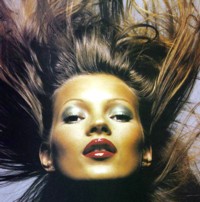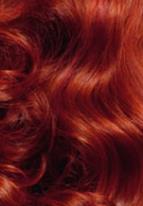Level: Think of a hair color chart that has 10 levels. 1 being the darkest which is black. And 10 being the lightest which is pale yellow. When we talk about levels we are referring to how light or dark your hair is. If you have medium brown hair, you are most likely a level 6. If you have light blonde hair. You are a level 9. And so on and so on.
Tones: Tones are the base of hair colors. Beige, Gold, Ash, and neutral are bases of hair color. You also have warms and cools when dealing with tones. A beige is generally a cool tone but some lines have more gold in the hair color thus making it a warm tone.
Developer: Developer is Peroxide. No, not the kind you all have at home. This is what causes the cuticle to open, allowing hair color pigment to enter the cuticle.
Volumes of Developers: The higher the volume, the stronger it is. Generally you would use 20 vol when coloring your hair. When highlighting you would use 30 and above, depending on if you are using hair bleach or a high lift hair color. It all depends how many levels you are going. Developer Volumes go by tens in levels. For example. You are lightening 1 level. You would use 10 volume. You are going 3 levels lighter. You would use 30 volume. Covering grey use 10 or 20 volume. Staying the same level but changing the tone (you are brown and are going red) use 10 volume.
Cap Method: This is used when highlighting or low lighting. The cap is just that. A disposable or rubber cap that fits on your head and thin strands are then pulled out and colored or bleached.
Foiling: This is a hair coloring method used to color certain pieces of hair. Actual foil is used. This method of hair coloring is more expensive but gives you many more options when it comes to multi-coloring your hair.
Tri-color: This means to put 3 colors into the hair. This is generally done with foil and gives a more natural effect.
Hair Color Terminology ...

...................................................................................................................
...................................................................................................................
EXPLORE OTHER ARTICLES

:
:
:
:
:
:
:
:
:
:
:
:
:
:
:
:
:
:
:
:
:
:
:
:
:
:
:
:
:
:
:
:
:
:
:
:
:
:
:
:
:
:
:
:
:
:
:
:
:
:
:
:
:
:
:
:
:
:
:
:
:
:
:
:
:
:
:
:
:
:
:
:
:
:
:
:
:
:
:
:
:
:
:
:
:
Copyright © Styles101.com
PHYTO l Biolage by Matrix l Bumble and bumble l Jonathan Product l Pureology l Rusk l Biosilk l CHI l
modern organic products l philosophy l Oscar Blandi l Frederic Fekkai l L'OCCITANE l Ojon l Rene Furterer l Alterna l Burts Bees l Pantene l Aussie l Neutrogena
Shop Hair Care ---->
Shop by Brand ---->
sponsored by drugstore.com, beauty.com & sephora.com
More in Hair Color 101
Hair Color Filler: When hair is damaged, hair color often deposits unevenly. These parts, usually the ends of your hair, could either become too dark or too light. Hair color fillers equalize the porosity differences in the hair to prepare it for an even color result scalp to ends. Colored fillers are also used to correct or neutralize tones in the hair.
Lift: This just means to lighten.
Lowlights: Adding darker strands, chunks or parts to your overall color. This is a great way to break up a highlight every 3rd or 4th time. Adding lowlights will prevent your hair color from becoming a solid color.
Highlights: consist of selecting thin or thick strands of hair that are then lightened at least 2 shades lighter than the rest of your hair. Highlights should compliment your natural or artificial hair color. One misconception of highlighting is that highlights are only blonde in color. This is not true. Highlights can be any tone or any shade of light or dark. As long as they are lighter than your overall hair color, these are considered highlights. For example: If your hair color is black, and you get dark brown tones put in, those are highlights. If your hair is brown, and you have lighter, caramel tones added, those would be also considered highlights.
Toner: You may hear your stylist say you need a toner after bleaching or lightening. A toner is simply a hair color that is applied on damp hair for between 3-10 minutes. Toners are a great way to cancel out yellow tones while lightening. Also they give you the desired hair color effect when lightening. For example: When adding caramel highlights, the stylist will bleach you to a higher level, then tone you with the correct caramel color after.


